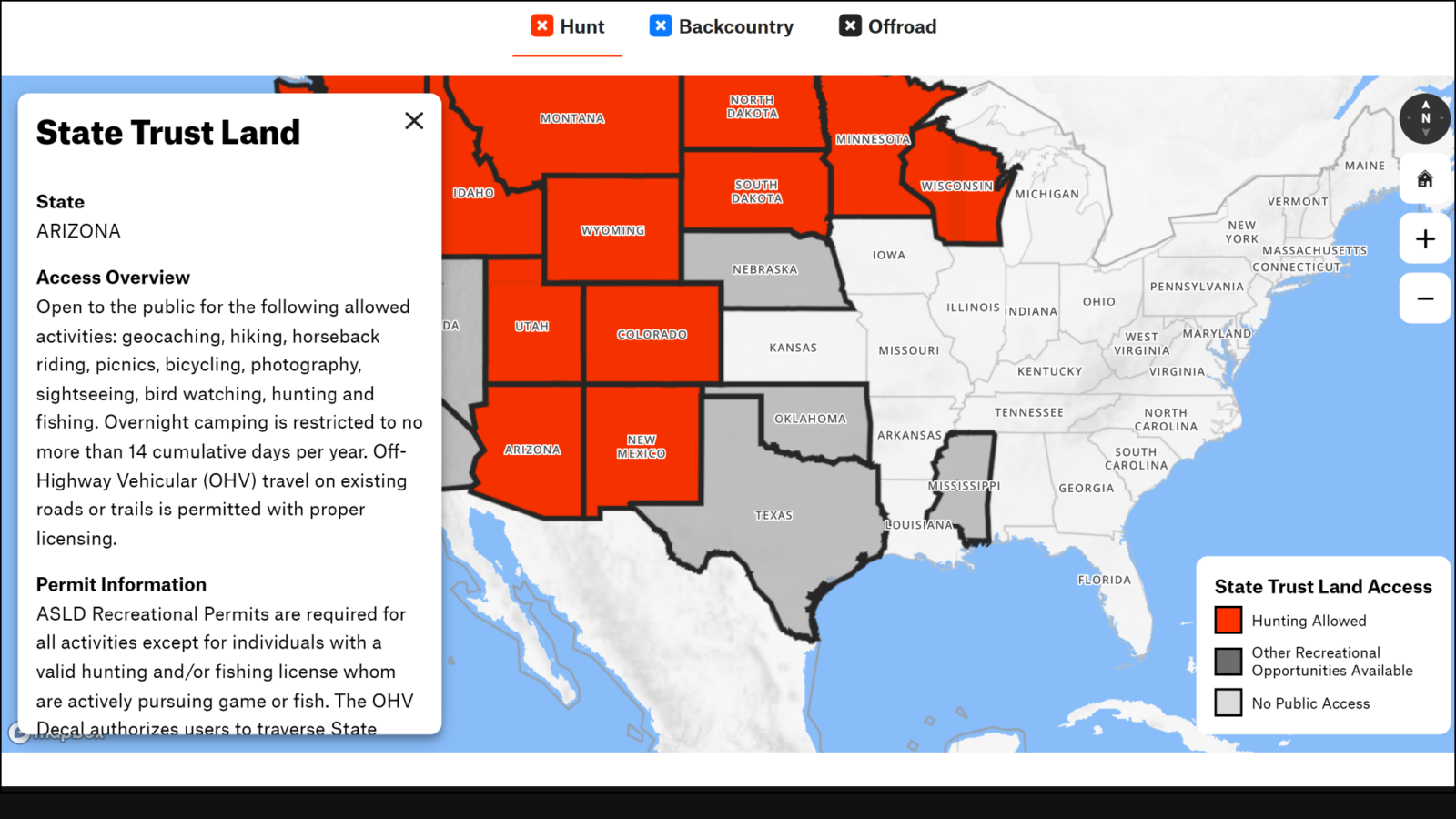Demystifying State Trust Lands: History & Interactive Guide of Access Regulations & Allowed Activities
At onX we often hear questions like: “Are state trust lands the same as all other state lands?” “Are they open to the public?” “And can we hunt and recreate on them? “
There are over 45 million acres of state trust lands, also commonly known as ‘school lands’, across 20 states. Yet, unlike state land managed for natural resources and recreational opportunities, such as state parks and wildlife management areas, these interests are secondary—if they’re even considered at all—for state trust lands. This is due to how they came into existence in the first place. Still, much of this land is open for outdoor recreational opportunities; however, finding and interpreting the information on the rules and regulations for each state can be difficult.
To help public land users better understand state trust land access regulations, we created a tool to illustrate how hunters, off-roaders, and human-powered adventurers can make the most of their time exploring the state trust lands that are open to the public. And to give more context, we also dove into the land’s fascinating history, explaining why this state land is so unique when compared to other types of public state land.
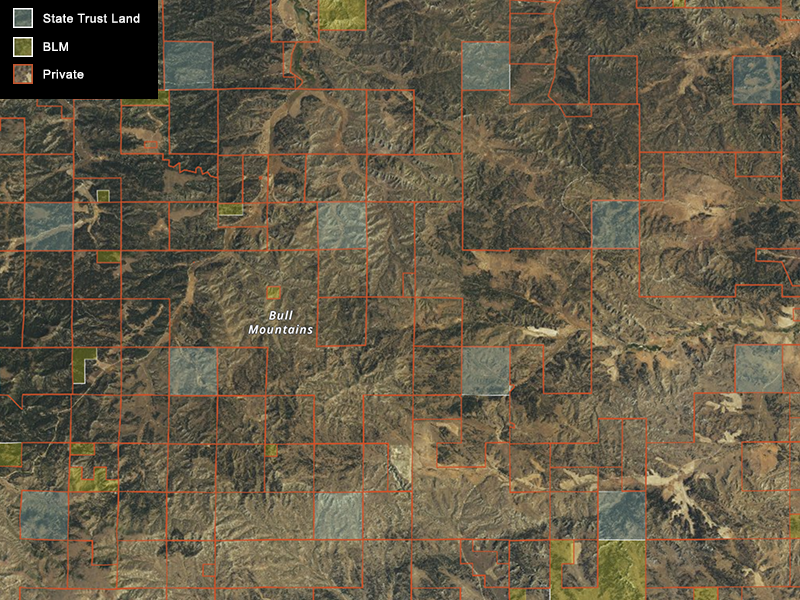
Where Did State Trust Lands Come From?
The federal government granted the vast majority of state trust lands to those states that entered statehood after the passage of the Northwest Ordinance of 1785. The goal was to support the public education system. Our nation’s state land grant program was founded on the belief that education was essential to ensure a prosperous future for the expanding nation. But at that time, the federal government had little money available to support the public needs of the newly organizing states. However, it did have an abundance of land it had laid claim to at its disposal. By granting some of these lands to new states, the federal government could provide new state governments with a source of revenue to fund public education far into the future. Later, other public institutions such as universities, penitentiaries, hospitals, or other medical facilities were also designated as beneficiaries to these funds in some states.
The first state to be granted state trust lands by the federal government upon statehood was Ohio in 1803. At that time, states were granted one section (one square mile) in each township (36 square miles) in the state. Over time, the amount of land states received increased to two sections per township. Utah, New Mexico, and Arizona, the final three states granted land under this structure, received four sections per township. However, Maine, Texas, and West Virginia did not receive the state trust land grants because of unique circumstances regarding their admissions into statehood.
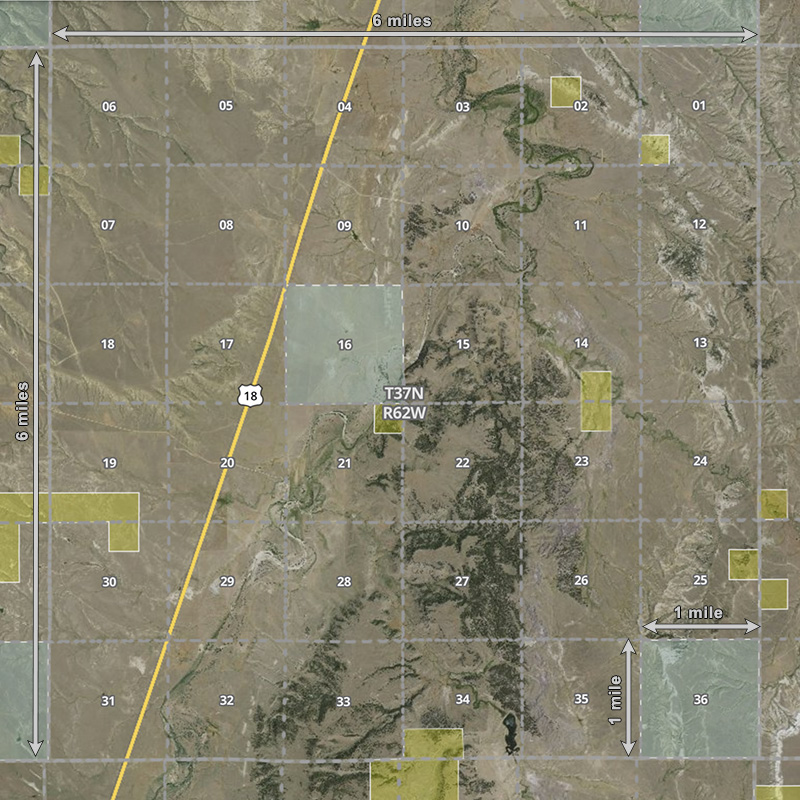
Alaska and Hawaii were the last two states to join the Union, and were not allotted state trust lands in the same ways as their predecessors. Alaska was allowed to choose more than 100 million acres of federal land to be granted to the state without the special use restrictions for generating revenue. About 1.2 million of these acres were dedicated for school purposes, and an additional million were dedicated to support mental health issues. Hawaii had already set aside “royal lands” as trust lands for public education before statehood, and these lands were ratified by the 1959 Statehood Act.
In all, 30 states received state trust land grants. However, many of the first states to receive state trust lands sold all or most of those lands immediately for profit, which did not provide long term support for schools. As a result, Congress placed increasingly stringent requirements on new states to limit the use of state trust lands.
Since most western states entered the Union after the additional requirements were implemented, they retain most of their original state trust lands. However, this did not eliminate the sales of state trust lands entirely, as evidenced by the limited acreage of state trust lands left in California, Nevada, and Oregon.
Is State Trust Land Public Land?
Not quite. Because of the clear mandate of managing these lands to generate revenue for public education and other public institutions, this land is not considered public land in the traditional sense. In the majority of states, management authority falls under a completely different division of state government than other state-owned land dedicated to recreation and natural resources preservation. Most state trust lands are managed by a state land office which, in turn, is governed by a land board.
States predominantly generate revenue from leasing activities such as mineral, oil, and gas leases, or renewable resources such as grazing leases and timber sales. More recently, renewable energy opportunities, including solar and wind farms, are being explored. Additionally, some real estate developments are being added as revenue-generating options.
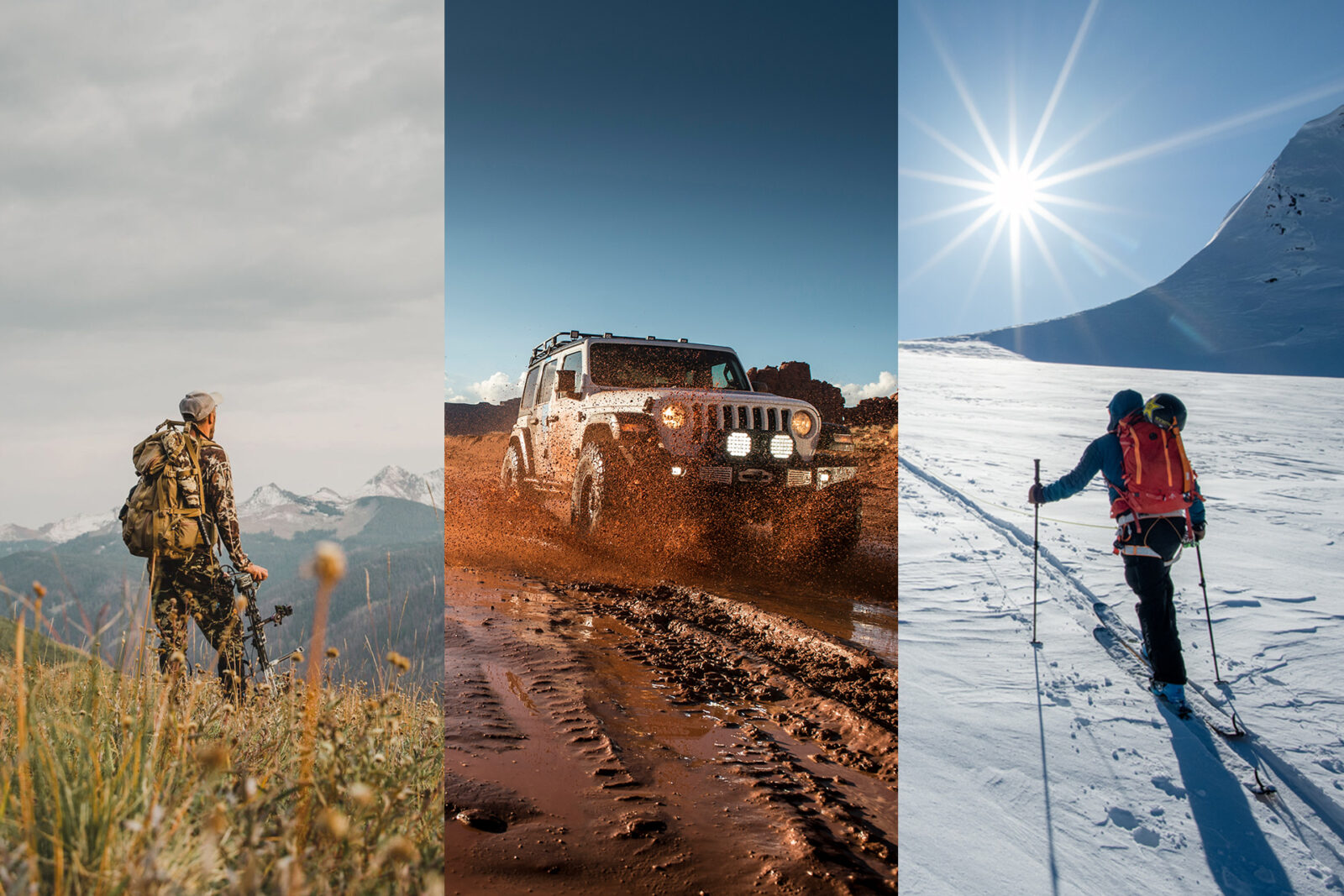
State Trust Lands and Recreation
So the question remains—where can I recreate on state trust lands? While a few states restrict public access on state trust lands, many others have found ways to accommodate recreational opportunities while still generating revenue. For example, Idaho allows free public access as long it does not interfere with any revenue-generating activities such as grazing or logging. Still other states have decided to use recreation as a way to raise additional revenue. One great example, New Mexico, has recently gone all-in at promoting recreation on their lands.
“Open for Adventure”
In 2019, the New Mexico State Land Office launched its “Open for Adventure” Outdoor Recreation Campaign in partnership with the New Mexico Wildlife Federation. This campaign aimed to increase recreational opportunities on their state trust lands in order to diversify revenue sources and improve the quality of lives of New Mexicans. Access is allowed through a $35 annual permit, which can be purchased online. Allowed activities include hiking, bouldering, and wildlife viewing. Through a separate easement agreement with the New Mexico Department of Game and Fish, the majority of state trust lands are also open for hunting.
Over the last few years, outdoor recreation enthusiasts have encouraged state governments to open their state trust lands for public access if they have not done so already. Colorado is a great example of a state that has opened its lands to hunting and fishing. In 2019, Colorado Governor Polis set a goal to double the amount of state trust land enrolled in their Public Access Program. They succeeded in increasing land enrolled from 478,000 acres in 2018 to 973,000 acres in 2021.
Presently, 13 states allow public access on at least some of their state trust lands, though the allowed activities do vary from state to state. This equates to almost 40 million acres of publicly accessible state trust lands in the Western US. However finding access information on state trust lands can be difficult. Often, this information is not found on the same webpage as lands managed by a state’s wildlife and/or recreation division, as it is managed by a different division. Additionally, though most commonly referred to as “state trust lands” or “school lands,” some states have their own unique terms for these lands. In Idaho, for example, the lands are often referred to as “state endowment lands.” Finally, since recreation is usually a secondary use of the land, presenting this information to the public is often not considered a priority.
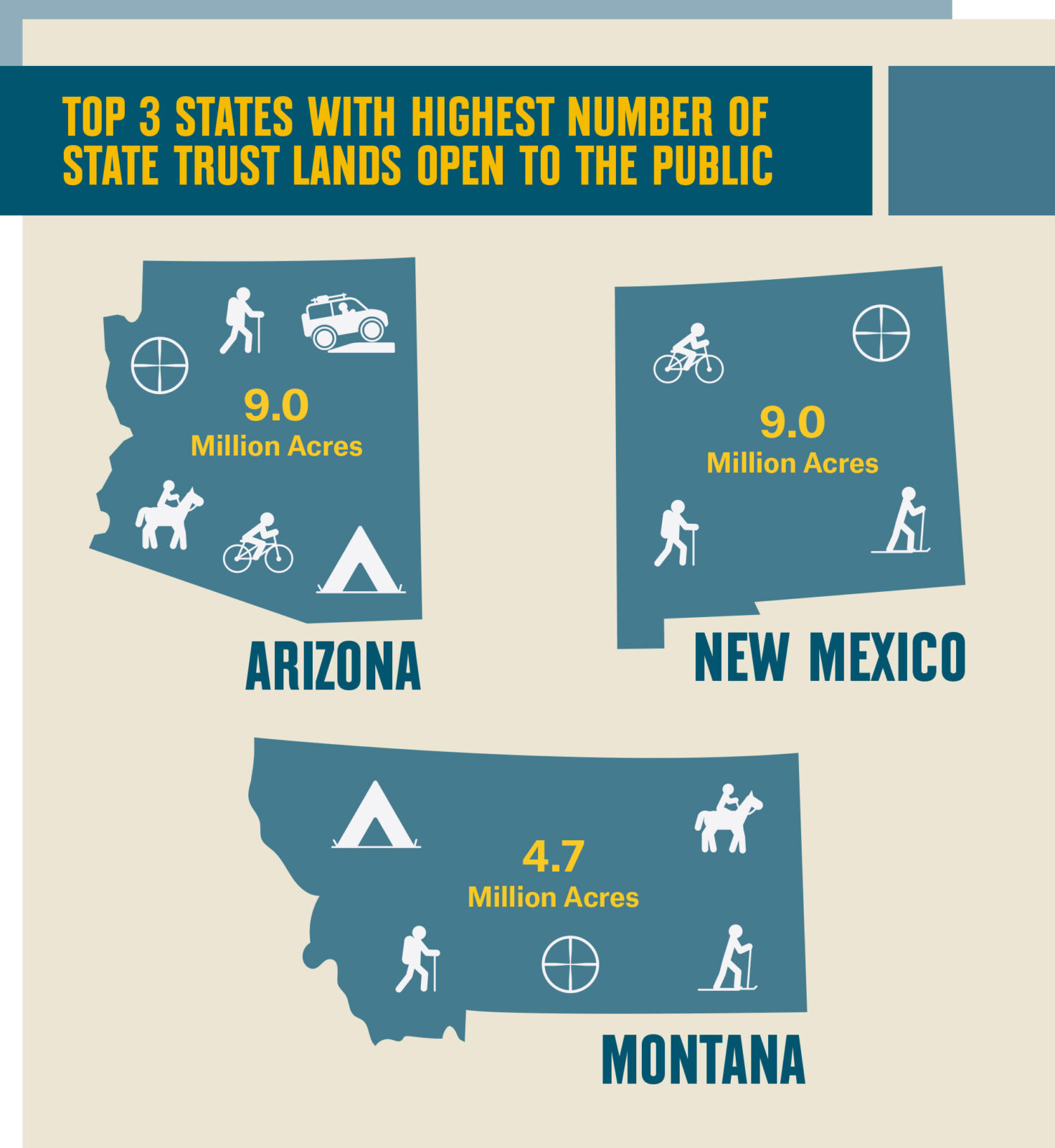
New Interactive Guide
To better serve hunters and outdoor recreators, we’ve created an interactive desktop map to provide the information you need to understand the regulations for state trust lands. It is important to remember that even in states that allow recreation on their state trust land, if there is no public road or trail to a parcel, you will need permission from the neighboring landowners to cross private land.
Checkout the Interactive Guide for an overview of each states’ access regulations and for direct links to the state webpages.
State Trust Land FAQ
State trust lands were granted by the federal government to areas that entered statehood after 1785. The goal was to provide states with a resource they could use for long term support of their public education system. Thirty states received state trust land grants, but only 20 states still currently own state trust lands.
Land trusts are allowed in every state, however state trust lands can only be found in 20 states, currently. Those states are Alaska, Arizona, Colorado, Idaho, Minnesota, Montana, New Mexico, North Dakota, Oregon, South Dakota, Utah, Washington, Wisconsin, Wyoming, California, Mississippi, Nebraska, Nevada, Oklahoma, and Texas.
State trust lands are located in the Midwest or Western United States. If you happen to be in these states, you can easily locate state trust lands with a GPS land ownership map app such as onX Hunt, onX Offroad, or onX Backcountry.
For states that have state trust lands, the policies and regulations regarding land use and access vary.
State trust lands are designed to fund education and civic institutions through revenue streams like timber harvesting, mineral extraction, and the sale of other renewable resources.
Many states allow hunting on their state trust lands, however regulations vary and some states don’t allow it at all. You can see quickly which states allow hunting on state trust land by using our interactive guide. View even more information by using onX Hunt.
As with hunting, some states allow it while others don’t. You can see very quickly which states allow camping on state trust land by using our interactive guide. View even more information by using onX Hunt, onX Offroad, or onX Backcountry.
